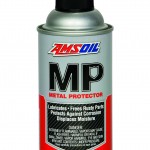The AMSOIL America Adventure is a 6-day competition in October of 2015. The competition will take teams on an adventurous route filled with intense competition with each evening ending in a new city. As part of the game, and the fun, teams will have no idea where they’ll end up for the night and will […]
You are browsing archives for
Category: Uncategorized
Spray-On Versatility – I keep one in eve
AMSOIL Metal Protector (AMP) – The Handy Man in a Can! It’s a high-performance, easy-to-use spray-on product that effectively lubricates, displaces moisture, protects against corrosion and penetrates to free corroded parts. With countless applications in the home, garage and business, it is one of the most versatile products in the AMSOIL line. Features and Benefits […]
AMSOIL Knowledge Base & Commitment to Ex
I go to the AMSOIL HQ in the Twin Ports cities of Duluth/Superior at least once every year. There we have three to five days to pick up on industry trends, hear from suppliers, tour the latest plant/lab/research facilities and meet with the corporate staff. Their purpose is to show us the how, why and […]
Amsoil Motorcycle Octane Boost Q&A
One product we see a lot of return sales is of the MOB (Motorcycle Octane Boost) The chemistry differs from the car version and really makes for a punch when temperatures are climbing. It cleans and raises octane all at once. What is AMSOIL Motorcycle Boost (MOB) and what benefits does it provide? AMSOIL Motorcycle […]

